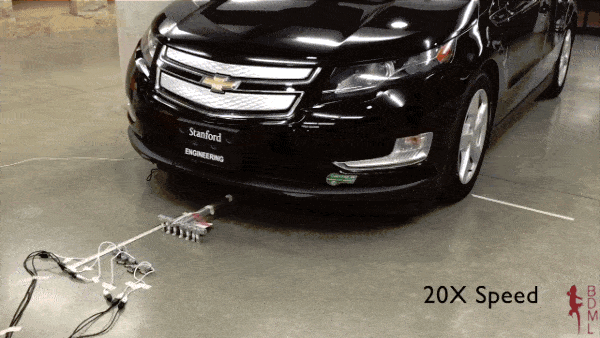Inspired by ants, researchers mimicked the insects’ individual super strength and collective hive mind in tiny robots. Each weighs only 0.2 pounds, but six were enough to tow a 3,900 pound-car, with one of the researchers seated as well. The scientists behind the project say the experiment is equivalent to six people trying to move the Eiffel Tower and three Statues of Liberty (on wheels).

The researchers at Stanford’s Biomimetics and Dextrous Manipulation Lab found that robots that have jerky motion are inefficient in groups. The robots they made, called μTugs, are better at pulling weight thousands of times their own by sustaining the pulling force for a longer duration. Critical in this respect is their ultra sticky ‘feet’ that mimic another famous feature from the animal kingdom — the gecko’s sticky pads. Previously, the same Stanford researchers built tiny bots that could scale walls owing to these artificial pads.
This adhesive, combined with team work, allowed the μTugs to perform this amazing feat.
“By considering the dynamics of the team, not just the individual, we are able to build a team of our ‘microTug’ robots that, like ants, are superstrong individually, but then also work together as a team,” David Christensen, a lead researchers, said.
The whole setup will be described at length in May, at the International Conference on Robotics and Automation in Stockholm.
via The Verge






